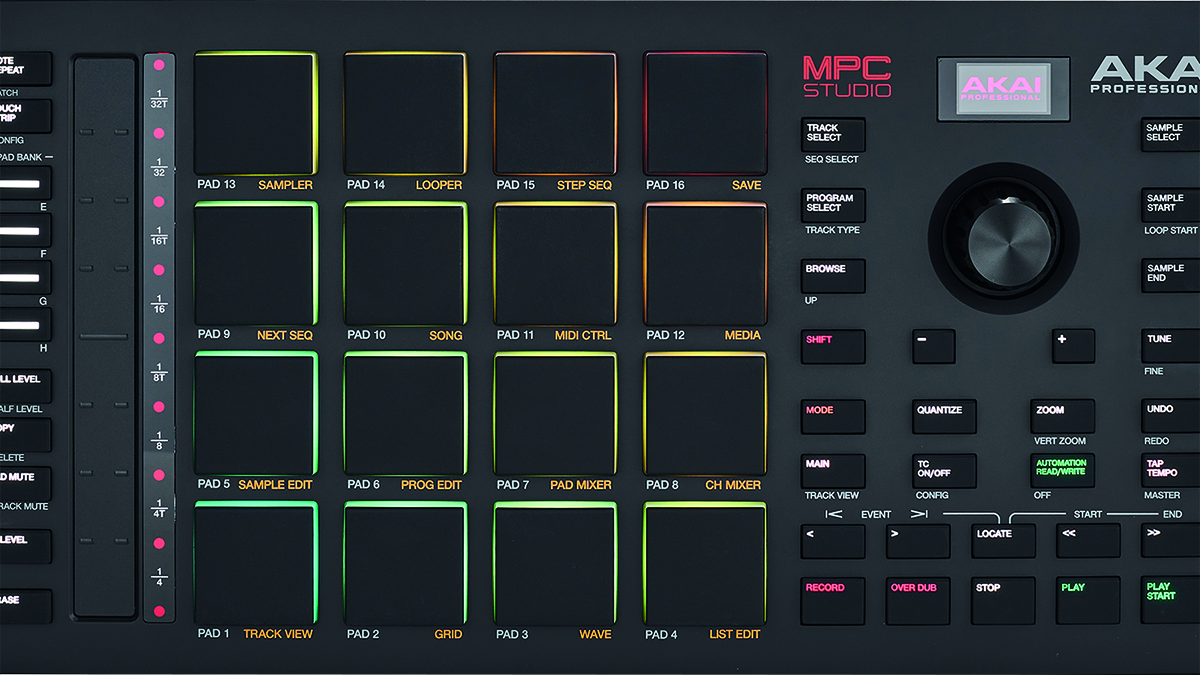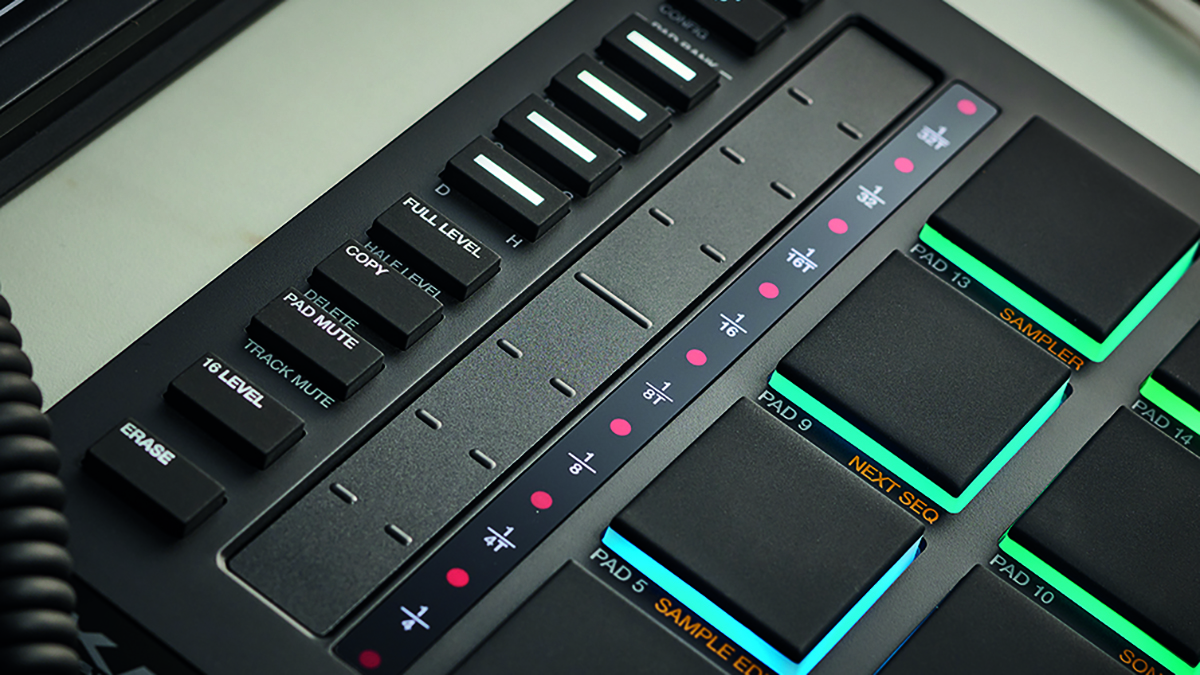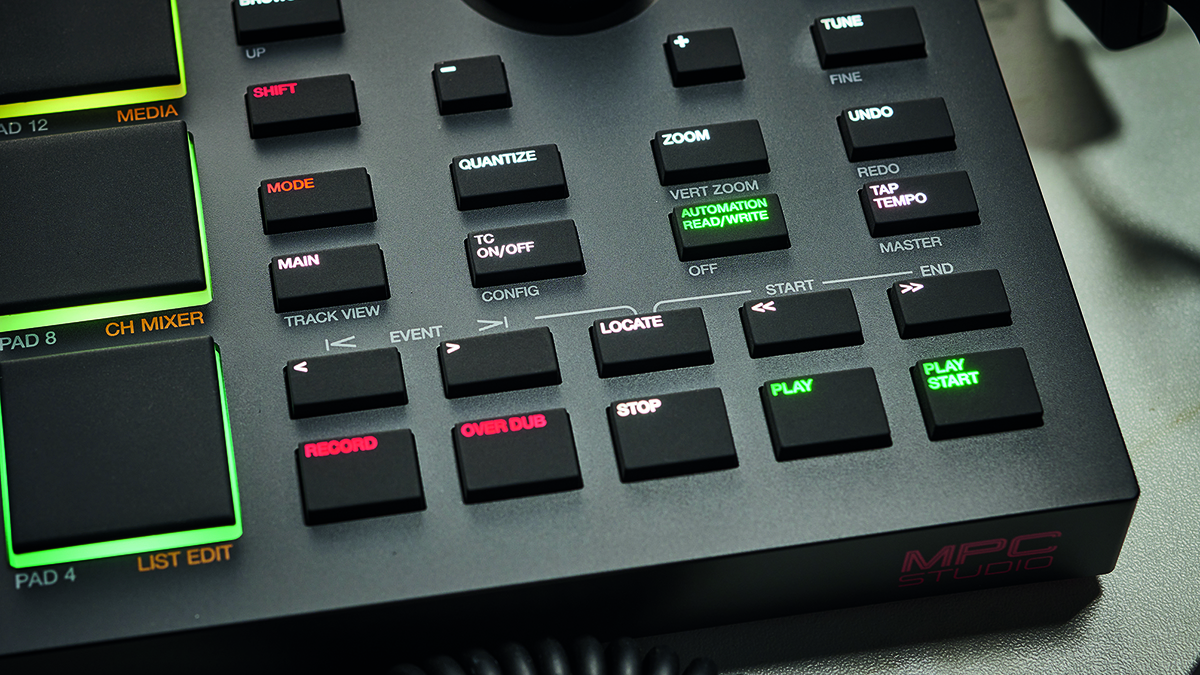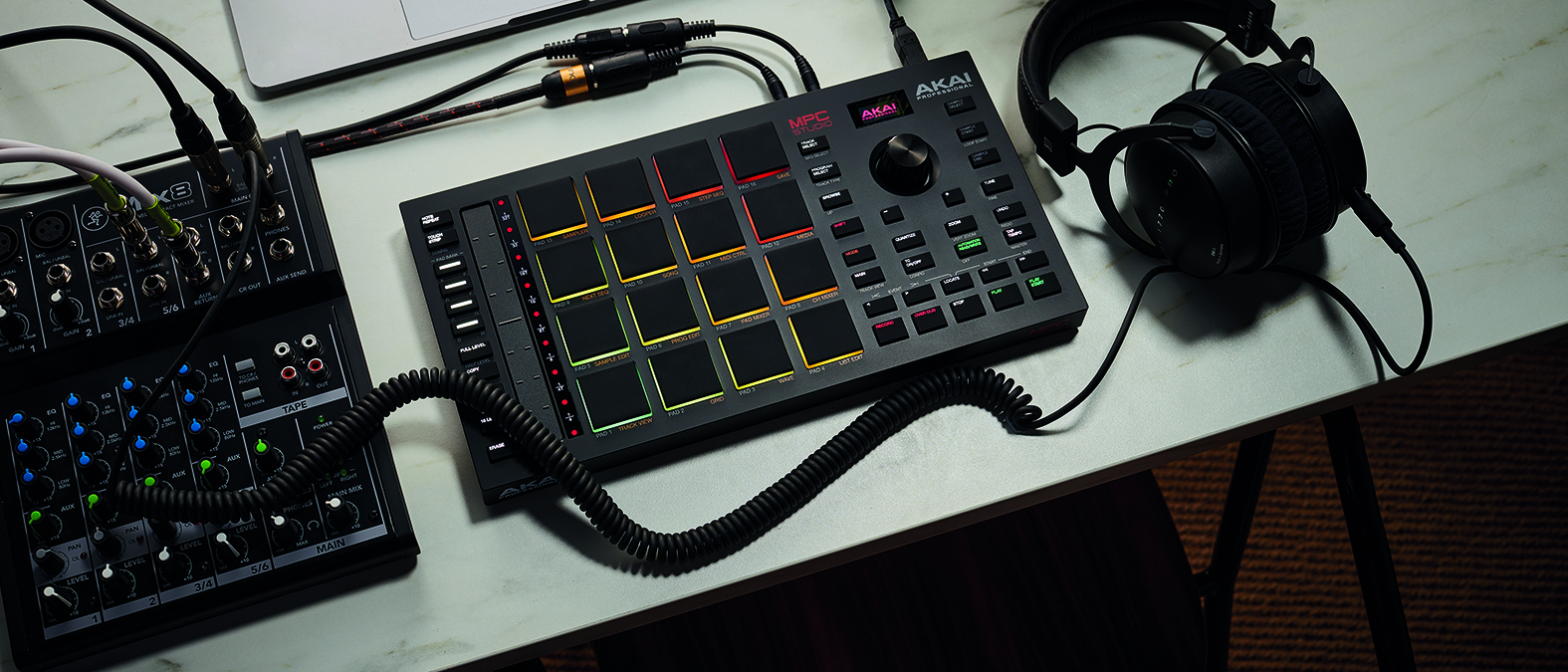MusicRadar Verdict
A low impact way of adding the MPC flavour to your setup. These pads certainly bring something extra to beat production.
Pros
- +
The trademark pads are always fun to play, and with a controller it’s even more rewarding.
- +
MPC software has matured to become an effective DAW in its own right.
- +
Good price for a bundle that includes the controller and full MPC software.
Cons
- -
The hybrid hardware/software approach isn’t for everybody.
MusicRadar's got your back
Akai MPC Studio: What is it?
Akai’s MPC Studio joins the MPC range, which comprises the MPC One, MPC Live, and MPC X. The Studio is a USB MIDI device that connects to a computer and controls the included MPC 2 DAW software – the other MPCs can also do this, but also function as fully standalone sequencing/sampling devices.
Consequently the Studio is more compact and more affordable than its siblings, giving potential users a choice that reflects their budgets and preferred working habits. It replaces a previous MPC Studio model, now discontinued, which had a more square-shaped layout, so don’t get the two mixed up – this one is technically the MPC Studio II.
The box includes the Studio, a USB cable, and two 3.5mm-DIN MIDI cable adaptors. The top panel bears the 16 familiar MPC pads, sturdy rubberised pieces with coloured LED rings around each one, a vertical control strip, an array of buttons, a small LCD display, and a larger data dial.

At the back you’ll find a USB port (purposely designed to be harder to disconnect for mid-gig safety), and 3.5mm MIDI in and out. It’s powered by USB, so there’s no need for a mains adapter. Once the device is registered, a variety of downloads are available, most important being the MPC 2 software.

It’s obvious that the MPCs are no longer simple beat machines – the MPC Software is a fully-blown DAW, with audio and MIDI recording, sample-based instruments aka keygroups, time stretching, and Ableton Link. Plugin instruments, including Hype, Bassline, Electric, Hybrid, Tube Synth, Solina, Mellotron, and WayOutWare Odyssey, reach beyond what you might expect for a machine that still has the aura of hip-hop around it.
Having used the Akai Force and MPC Live, we’re quite familiar with these instruments, and can vouch for their usability. Audio effects include offerings from Akai and AIR, including reverbs, delays, filters, EQs, compressors, and so on. The latest version of MPC 2 includes FX Racks – where up to four effects can be saved and recalled together – and vocally-oriented AIR FX including Vocal Doubler, Vocal Harmonizer, and Vocal Tuner.
MPC 2 will host AU and VST plugins, although this can be turned on its head, as MPC 2 will itself function as a plugin inside other DAWs, creating fascinating possibilities for complex setups. A DAW within a DAW, who wouldn’t want to try that? (See also Reason 11). The Studio hardware still works when MPC is acting as a plugin, by the way.
Akai MPC Studio: Performance and verdict
In pure hardware terms, the MPC Studio makes a fine controller, at a sensible size. It’s compact and spacious enough to swing those pad-hittin’ fingers. Let’s begin by observing that there’s something strangely satisfying about hardware transport controls. And the pads? Sure, they’re proper MPC pads. Playing beats on them is fine as-is, and they’re pressure and velocity sensitive, though you might need some adjustment for playing more delicate instrument parts – there are options for setting pad sensitivity which will deal with this. With the right tweaks for personal style, these will handle anything from finger drumming to piano performances.

There are no knobs to tweak, but the assignable touch strip comes into play, with a vertical bar next to it, similar to Apple’s (now abandoned) MacBook Pro Touch Bar, showing symbols relevant to the current parameter.

• Akai MPC One
The MPC Studio’s prime competitors might be other Akai hardware, for example the MPC One sequencer/sampler, which adds a 7” diagonal touch display. It’ll integrate with the MPC software on a connected computer, but it’s also a standalone, fully functioning machine in its own right.
• NI Maschine Mikro
The Akai MPCs and the Native Instrument Maschines are clearly lined up against each other. Both ranges are capable of producing any variety of sound, but both skew towards beatmaking. The Maschine Mikro is a hardware controller, coming in a bundle that includes the full Native Instruments Maschine software.
The RGB LCD display is very small, but it’s crisp, the text is legible and the colours help convey the necessary info. This obviously isn’t a screen you’d spend a lot of time looking at, but it’s still useful. The buttons are very good at reducing mouse-time – it’s possible to select tracks, browse and load presets, zoom the computer screen, and apply quantisation, amongst other things.
The mode button is the key to accessing many other functions directly from the pads, for example, the step sequencer – hardware sequencers are always fun to use and this is no exception; in fact that was probably the most enjoyable time we spent with the Studio pads.
You might also choose to enter Pad Perform mode to play a single sound pitched across all of the pads, or to trigger chords or scales, or even use the pads to enter locators in the project timeline.
We couldn’t resist trying it with Ableton Live, a DAW that’s over-served by MIDI hardware, if anything. We remapped the incoming MIDI note numbers to the 16 pads in Ableton drum racks, but that’s easy enough. In this ‘dumb’ mode, all the MPC buttons send MIDI too – they work for turning effects on/off, or launching clips and scenes.

The MPC Studio won’t be much appreciated by standalone die-hards, nor by users who are already irrevocably attached to other DAWs. But if you’re interested in using MPC 2 as a DAW, or a plugin, and you want those MPC pads, this is a good way to get it. The MPC Studio doesn’t convey the full glory of the MPC experience, but you get some of it, and that’s fair at this price; it’s a good ‘breakout box’ for the software.
MusicRadar verdict: A low impact way of adding the MPC flavour to your setup. These pads certainly bring something extra to beat production.
Akai MPC Studio: Hands-on demos
AkaiProVideo
Sanjay C
Accurate Beats
Gabe Miller Music
Akai MPC Studio: Specifications
- SOFTWARE INTEGRATION: This is a dedicated hardware front-end for Akai’s MPC 2 DAW.
- HARDWARE INTERFACE: Akai are old hands at interface design, and that shows here, with a clean layout, and the classic MPC pads we’ve all poked. Pad modes - sequence, or play notes and chords, from the pads.
- CONTACT: Akai Pro

Martin Delaney was one of the UK’s first Ableton Certified Trainers. He’s taught Ableton Live (and Logic Pro) to every type of student, ranging from school kids to psychiatric patients to DJs and composers. In 2004 he designed the Kenton Killamix Mini MIDI controller, which has been used by Underworld, Carl Craig, and others. He’s written four books and many magazine reviews, tutorials, and interviews, on the subject of music technology. Martin has his own ambient music project, and plays bass for The Witch Of Brussels.
Baby Audio's Smooth Operator spectral balancing plugin goes pro
"It was ugly, like watching a divorce between four people. After a while, I had to get out": Beatles engineer Geoff Emerick on the recording of Abbey Road, track-by-track
"I said, “What’s that?” and they said, “It’s what Quincy Jones and Bruce Swedien use on all the Michael Jackson records": Steve Levine reminisces on 50 years in the industry and where it’s heading next










